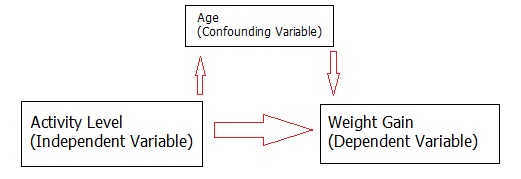Types of Variable > Extraneous Variable
What are Extraneous Variables?
Extraneous variables are any variables that you are not intentionally studying in your experiment or test. When you run an experiment, you’re looking to see if one variable (the independent variable) has an effect on another variable (the dependent variable). In an ideal world you’d run the experiment, check the results, and voila! Unfortunately…like many things in life…it’s a little more complicated that than. Other variables, perhaps ones that never crossed your mind, might influence the outcome of an experiment. These undesirable variables are called extraneous variables.
A simple example: you want to know if online learning increases student understanding of statistics. One group uses an online knowledge base to study, the other group uses a traditional text. Extraneous variables could include prior knowledge of statistics; you would have to make sure that group A roughly matched group B with prior knowledge before starting the study. Other extraneous variables could include amount of support in the home, socio-economic income, or temperature of the testing room.
Types of Extraneous Variables
- Demand characteristics: environmental clues which tell the participant how to behave, like features in the surrounding or researcher’s non-verbal behavior.
- Experimenter / Investigator Effects: where the researcher unintentionally affects the outcome by giving clues to the participants about how they should behave.
- Participant variables, like prior knowledge, health status or any other individual characteristic that could affect the outcome.
- Situational variables, like noise, lighting or temperature in the environment.
Confounding Extraneous Variable

One type of extraneous variable is called a confounding variable. Confounding variables directly affect how the independent variable acts on the dependent variable. It can muddle your results, leading you to think that there is cause and effect when in fact there is not. In the above example, a confounding variable could be introduced if the researcher gave the text book to students in a low income school, and assigned online learning to students in a higher income school. As students in higher income schools typically take more challenging coursework than students in lower income schools, pre-knowledge becomes a confounding extraneous variable.
Extraneous variables should be controlled if possible. One way to control extraneous variables is with random sampling. Random sampling does not eliminate any extraneous variable, it only ensures it is equal between all groups. If random sampling isn’t used, the effect that an extraneous variable can have on the study results become a lot more of a concern.
References
Beyer, W. H. CRC Standard Mathematical Tables, 31st ed. Boca Raton, FL: CRC Press, pp. 536 and 571, 2002.
Dodge, Y. (2008). The Concise Encyclopedia of Statistics. Springer.
Everitt, B. S.; Skrondal, A. (2010), The Cambridge Dictionary of Statistics, Cambridge University Press.
Kotz, S.; et al., eds. (2006), Encyclopedia of Statistical Sciences, Wiley.